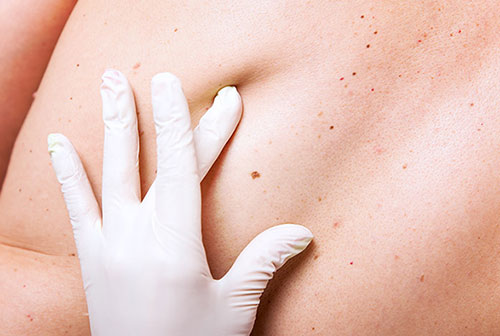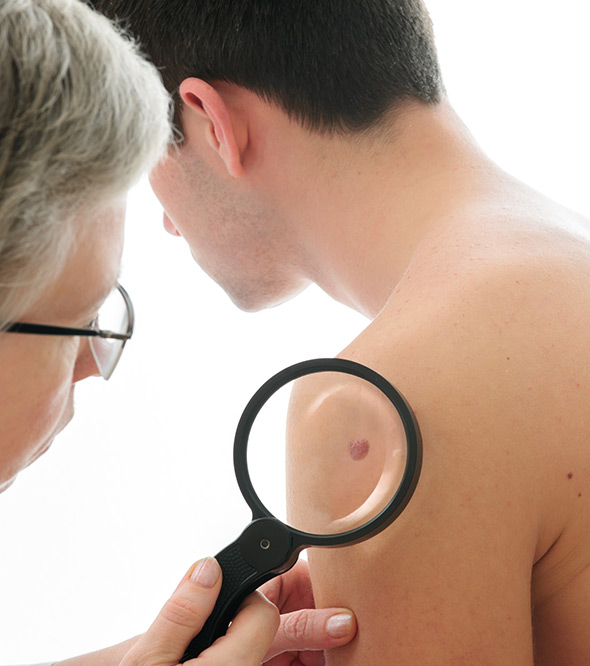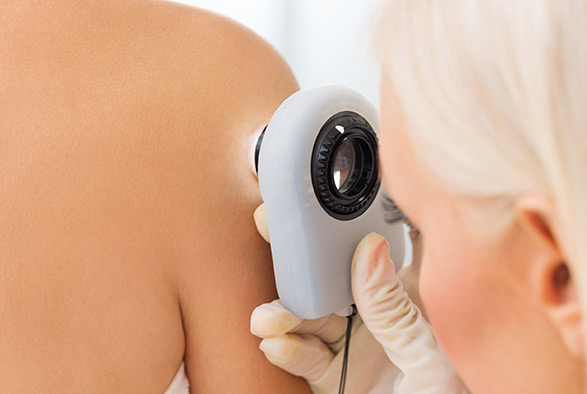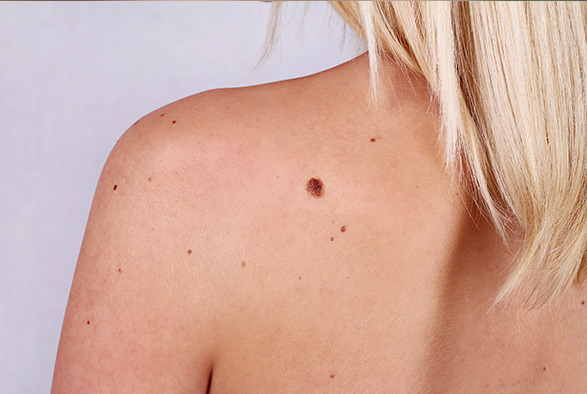Moles Treatment in New York, New Jersey & Connecticut
Most people have moles somewhere on their body. Although these common growths are rarely a cause for concern, changes in their shape, size, or pigmentation may require a doctor’s attention. In some cases, individuals seek to have moles removed to improve the appearance of their skin, especially if the mole is in a prominent area, such as the face. In rare cases, moles may develop into cancerous growths and must be treated by a qualified doctor. If you are bothered by the appearance of moles of your body or wish to have a suspicious mole examined, our experienced team of dermatologists in NYC can help.
Moles, also known as nevi, are commonly occurring growths on the skin that appear when melanocytes (pigment cells) develop in clusters. Moles can vary greatly in their size, shape, and color. The common mole is usually smaller than the size of a pencil eraser. They typically have an even coloring, in a shades of pink, tan, or brown. Individuals with darker skin tend to have darker moles than individuals with lighter skin. A common mole will be round or oval with a distinct edge and a smooth surface. They are often dome shaped, but can also appear flat against the skin. Most moles appear later in childhood, but some may be present since birth. Most adults have about 10 to 40 common moles, which tend to appear on sun-exposed areas of the body.


When a mole deviates in appearance from a common mole, it may be referred to as an atypical or mole or dysplastic nevus. The mole may be bigger than a common mole and its shape, color, surface and/or border may appear different. Rather than an even color or tone, a dysplastic nevus may contain a mixture of colors and its surface may have a variety of textures. The edge may be irregular, causing the mole to fade into the surrounding skin. Dysplastic nevi are most likely to occur in areas that are exposed to the sun, such as the face, neck, arms, and back. They can also appear in areas that are normally covered, such as the legs and breasts.
Researchers have observed that individuals with a higher number of dysplastic nevi are more likely to have melanoma, a type of skin cancer that can be fatal if left untreated. While common moles and dysplastic nevi rarely turn into melanoma, individuals who have many moles should undergo routine skin examinations with an experienced dermatologist. Regular exams help doctors determine if a skin growth is or could become cancerous. Moles that have changed in color, shape, or size, may be cancerous – if your doctor is concerned, he will remove part of the mole for examination under a microscope to determine if the growth is cancerous.
The rise in skin cancer has heightened many people’s concerns about moles. Given the varied appearances of common moles, it can be hard to determine if you should be concerned about a particular growth. As such, it is important to involve your dermatologist in the care of your skin. In most cases, moles are harmless. Even so, you may wish to have the mole removed for cosmetic purposes. The dermatologists at our offices in the New York area are experienced and qualified at examining moles and identifying ones that should be more closely observed or examined. Contact us today to make an appointment for a skin examination – we have offices conveniently located in Westchester County, Suffolk County, and Nassau County.
Moles may be removed from the body for medical or cosmetic reasons. Many people are bothered by the appearance of moles on prominent areas of their body, such as the face and neck. Moles may also be problematic if they occur in areas of friction, such as around a bra strap or waistband, where they can be easily irritated, bleed, and/or cause pain. Our dermatologists can safely and easily remove moles using only local anesthesia. When working with a skilled dermatologist, scarring from mole removal should be minimal.
Moles may also be removed to determine if they contain cancerous tissue. In this case, the doctor will remove your mole and send the tissue to a laboratory for examination. If the growth contains cancerous material, the doctor will help you determine the best way to treat the skin cancer so it causes no further problems. To learn more about mole removal in NJ, contact us today.


When to See A Doctor
On rare occasions, moles may turn into cancerous growths known as melanoma. Left untreated, melanoma can be fatal. Researchers have noted that individuals who present with larger numbers of dysplastic nevi are more likely to develop melanoma. While it is rare for a mole to develop into skin cancer, it is important to seek medical attention as soon as you notice that a mole’s appearance has changed. It is very difficult to determine which moles are normal and which may become problematic, so it is important to work with a trained and experienced dermatologist. To determine if your mole requires medical treatment, contact one of our offices in NY, Long Island, or Westchester County.
In addition, if you have a large number of moles, we encourage you to undergo annual or bi-annual skin examinations. It can be very difficult to track the progress of moles on your entire body by yourself. During a skin examination, our dermatologist will record the appearance and location of moles on your body and track any changes over the years.
